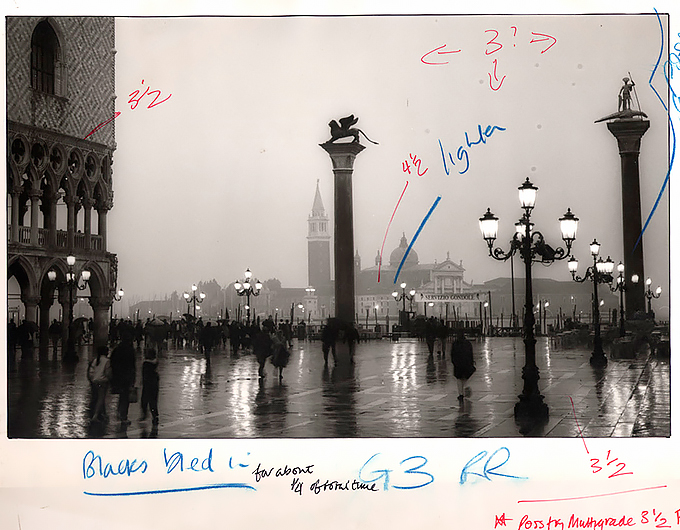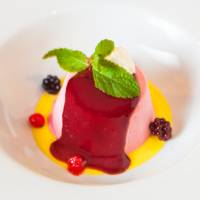
Is it Photoshopped? No. despite not going through Photoshop, many traditional silver-based photo prints did have alterations as this picture shows; highlights, shadows, contrast, burning-in and more – all the skills learned over time in the dark and, most, necessary adjustments from a negative or positive to craft the image.
Producing a monochrome photographic print today remains an enjoyable task, one where you can get your hands dirty and have a tangible, physical product at the end of it. Achieving a high quality print is still no mean feat. The picture above was a test exposure with comments and guidance notes for subsequent exposure/development written – even scrawled albeit artistically – in chinagraph pencil.
The paper used was Agfa’s wonderful Record Rapid which had a Baryta base and produced rich, warm blacks. The Online Darkroom suggests Agfa stopped making Record Rapid in about 2003. Apparently the original paper contained Cadmium which really isn’t something you want to be handling with bare hands. Regardless, the paper had a huge fan base and is missed.
This image was shot one early November day when the rain didn’t stop, it was cold and there was seemingly nothing that would entice you to photograph Venice, let alone be there. However, it is at times like this, when there are few tourists and everything seems to be against the photographer, that the real atmosphere of the working Venice can be felt.
Traditional photography using medium format and 35mm is one of the specialised services we are happy to offer clients in Devon and throughout the UK for specialised shoots, ad campaigns and more along with our digital work. Need convincing about the role of analogue photography in a digital age? Just have a look at the analogue work of celebrity and political photographer Platon…
The final print of this image can be seen in the Personal Work Gallery.




















